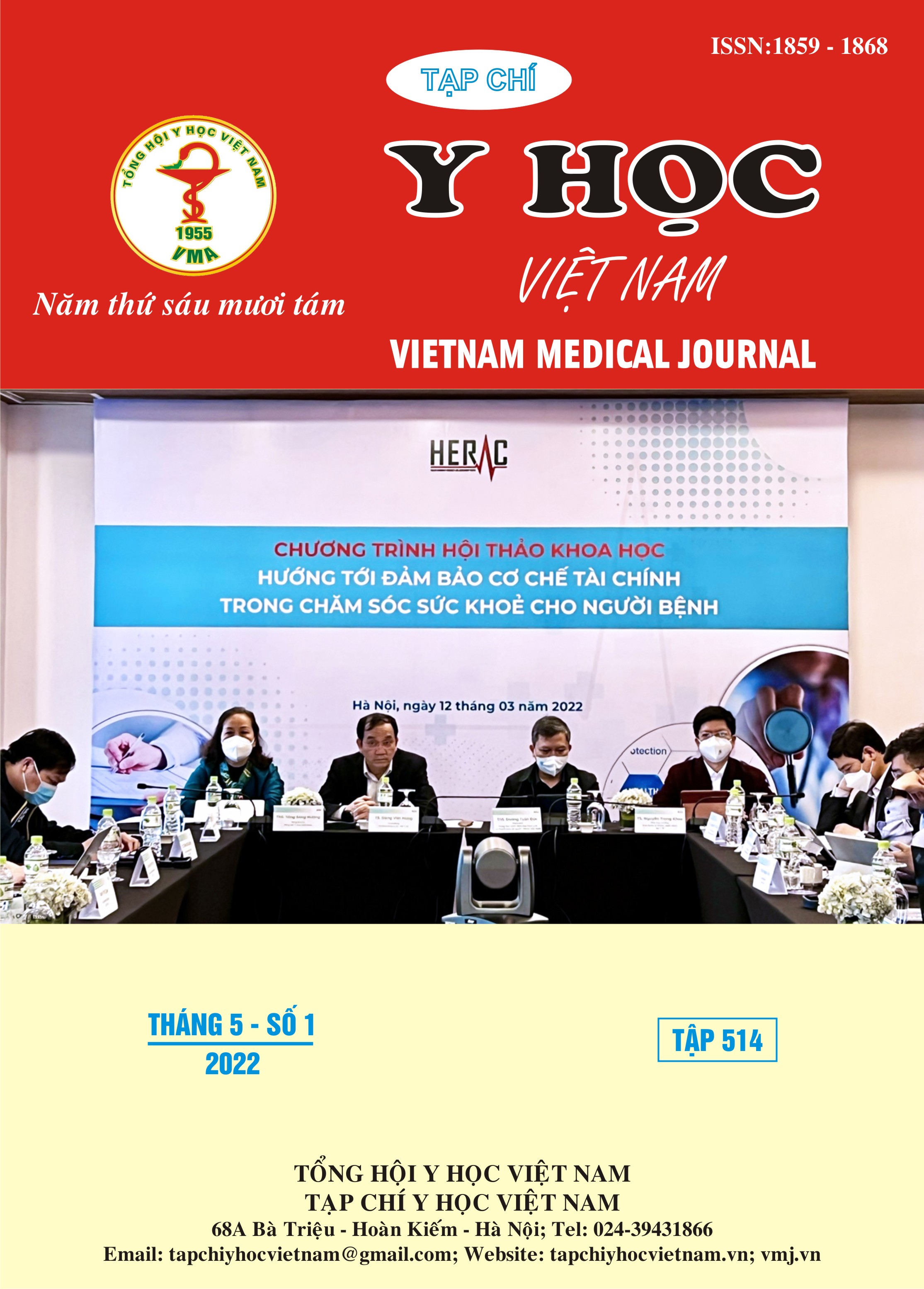ĐẶC ĐIỂM LÂM SÀNG, CẬN LÂM SÀNG BỆNH VIÊM LOÉT DẠ DÀY TÁ TRÀNG Ở TRẺ EM ĐIỀU TRỊ TẠI BỆNH VIỆN SẢN-NHI TỈNH QUẢNG NGÃI
Nội dung chính của bài viết
Tóm tắt
Đặt vấn đề: Viêm loét dạ dày tá tràng (VLDDTT) là kết quả của quá trình viêm gây ra do sự mất cân bằng của yếu tố bảo vệ tế bào và yếu tố độc tế bào ở dạ dày và tá tràng, dẫn đến viêm hay loét dạ dày tá tràng. VLDDTT ở trẻ em chủ yếu là mạn tính, mà nguyên nhân chủ yếu do nhiễm H. pylori [1]. Hiện nay, nội soi dạ dày tá tràng là thủ thuật xâm lấn, có vai trò quan trọng trong việc chẩn đoán, điều trị cũng như đánh giá hiệu quả điều trị viêm loét dạ dày tá tràng. Vào tháng 08/2019, Bệnh viện Sản-Nhi tỉnh Quảng Ngãi cũng đã tiến hành triển khai thủ thuật nội soi dạ dày tá tràng cho các trẻ có triệu chứng nghi ngờ viêm loét dạ dày tá tràng nhập viện. Tuy nhiên, đến nay chưa có nghiên cứu nào đánh giá hiệu quả của việc triển khai nội soi dạ dày tá tràng trong chẩn đoán và điều trị viêm loét dạ dày tá tràng ở trẻ em tại Bệnh viện Sản-Nhi tỉnh Quảng Ngãi. Mục tiêu: 1. Mô tả đặc điểm lâm sàng, cận lâm sàng của viêm loét dạ dày tá tràng trẻ em điều trị tại khoa Nhi tiêu hóa Bệnh viện Sản-Nhi tỉnh Quảng Ngãi. 2. Xác định mối liên quan giữa lâm sàng, cận lâm sàng của viêm loét dạ dày tá tràng trẻ em với nhiễm H.pylori. Đối tượng và phương pháp nghiên cứu: Nghiên cứu cắt ngang mô tả. Các bệnh nhi chẩn đoán viêm, loét dạ dày tá tràng, được nội soi dạ dày tá tràng từ tháng 04/2020 đến 09/2021 tại Bệnh viện Sản Nhi tỉnh Quảng Ngãi. Kết quả: Đặc điểm lâm sàng, cận lâm sàng của trẻ viêm loét dạ dày tá tràng: Triệu chứng LS thường gặp nhất là đau bụng (chiếm 98,1%). Vị trí đau bụng thường gặp là thượng vị với 76,7%. xuất huyết tiêu hóa chiếm 19%. Triệu chứng thiếu máu 18,1%. Các chỉ số hồng cầu: MCV, MCH, MCHC, RWD, Hb ở trẻ VLDDTT có thiếu máu lần lượt là: 81,0fL, 26,9pg; 31,9g/dl, 13,7% và 12,2%. Có 73,3% trẻ được chẩn đoán qua nội soi là viêm dạ dày. Tỷ lệ xuất hiện ổ loét chiếm 26,7%. CLO-test dương tính chiếm tỉ lệ 43,8% và tỷ lệ nhiễm H. pylori là 32,4%. Mối liên quan: Có mối liên quan giữa nhóm tuổi, giới tính, tính chất đau bụng, xuất huyết tiêu hóa, tình trạng thiếu máu, kết quả nội soi với kết quả nhiễm H.Pylori (p<0,05). Kết luận: đau bụng (98,1%). Thiếu máu chiếm tỉ lệ 31,5%. Tỉ lệ nhiễm H.Pylori 32,1%. Có mối liên quan có ý nghĩa thống kê giữa nhóm tuổi, giới tính, tính chất đau bụng, xuất huyết tiêu hóa, tình trạng thiếu máu, kết quả nội soi với nhiễm H.Pylori. Những trẻ có loét thì nguy cơ nhiễm H. pylori cao gấp 14,6 lần so với những trẻ không loét. Trẻ vừa xuất huyết tiêu hóa và nhiễm H. pylori có tỷ lệ loét cao hơn gấp 2,6 lần so với trẻ nhiễm H. pylori và không xuất huyết tiêu hóa.
Chi tiết bài viết
Từ khóa
Viêm loét dạ dày tá tràng, Xuất huyết tiêu hóa, H. Pylori, Viêm dạ dày, Bệnh viện Sản-Nhi tỉnh Quảng Ngãi
Tài liệu tham khảo
2. Aghareed M., Mohammed A. Alghamdi, Sumayah A. Fallatah, et al (2018), “Risk factors leading to peptic ulcer disease: systematic review in literature”, International Journal of Community Medicine and Public Health, 5(10), pp.4617-4624.
3. Kato S., Nishno Y., Ozawa K., et al (2014), “The prevalence of Helicobacter pylori in Japanese children with gastritis or peptic ulcer disease”, Journal of Gastroenterology, 39, pp.734–738.
4. Wang Y (2015),“Diagnosis of Helicobacter pylori infection: Current options and developments”, World J Gastroenterol, 21(40), pp.11221-35.
5. Nguyễn Thị Thúy Hằng (2019), “Nghiên cứu đặc điểm lâm sàng và cận lâm sàng của viêm loét dạ dày tá tràng ở trẻ em”, Tạp chí Nghiên cứu Y học, 5(121), tr.34-46.
6. Trần Đức Long, Nguyễn Trung Kiên, Nguyễn Thị Thu Cúc (2019), Tình hình nhiễm Helicobacter Pylori, đặc điểm lâm sàng và hình ảnh nội soi ở trẻ viêm, loét dạ dày - tá tràng từ 6-15 tuổi tại bệnh viện Nhi đồng Cần Thơ, Tạp chí Y Dược học Cần Thơ, 19, tr.1-8.
7. Nguyễn Phúc Thịnh, Hoàng Lê Phúc (2014), “Loét dạ dày tá tràng do Helicobacter Pylory ở trẻ em tại Bệnh viện Nhi Đồng 1 tại thành phố Hồ Chí Minh từ tháng 6 năm 2013 đến tháng 1 năm 2014”, Tạp chí Bệnh viện Nhi Đồng 1, tr.1-8.
8. Nguyễn Cẩm Tú, Phạm Thị Ngọc Tuyết, Nguyễn Anh Tuấn (2011), “Viêm loét dạ dày tá tràng do helicobacter pylori ở trẻ em: Đặc điểm lâm sàng, nội soi và hiệu quả tiệt khuẩn của phác đồ OAC”, Tạp chí Y học thành phố Hồ Chí Minh,15(1), tr.294-301.
9. Nguyễn Thị Út, Lê Thanh Hải (2010), “Bước đầu đánh giá hiệu quả diệt Helicobacter Pylori của phác đồ tuần tiến trong điều trị nhiễm Helicobacter Pylori ở trẻ em”, Tạp chí Y học thực hành, 727(7), tr.39-41.


